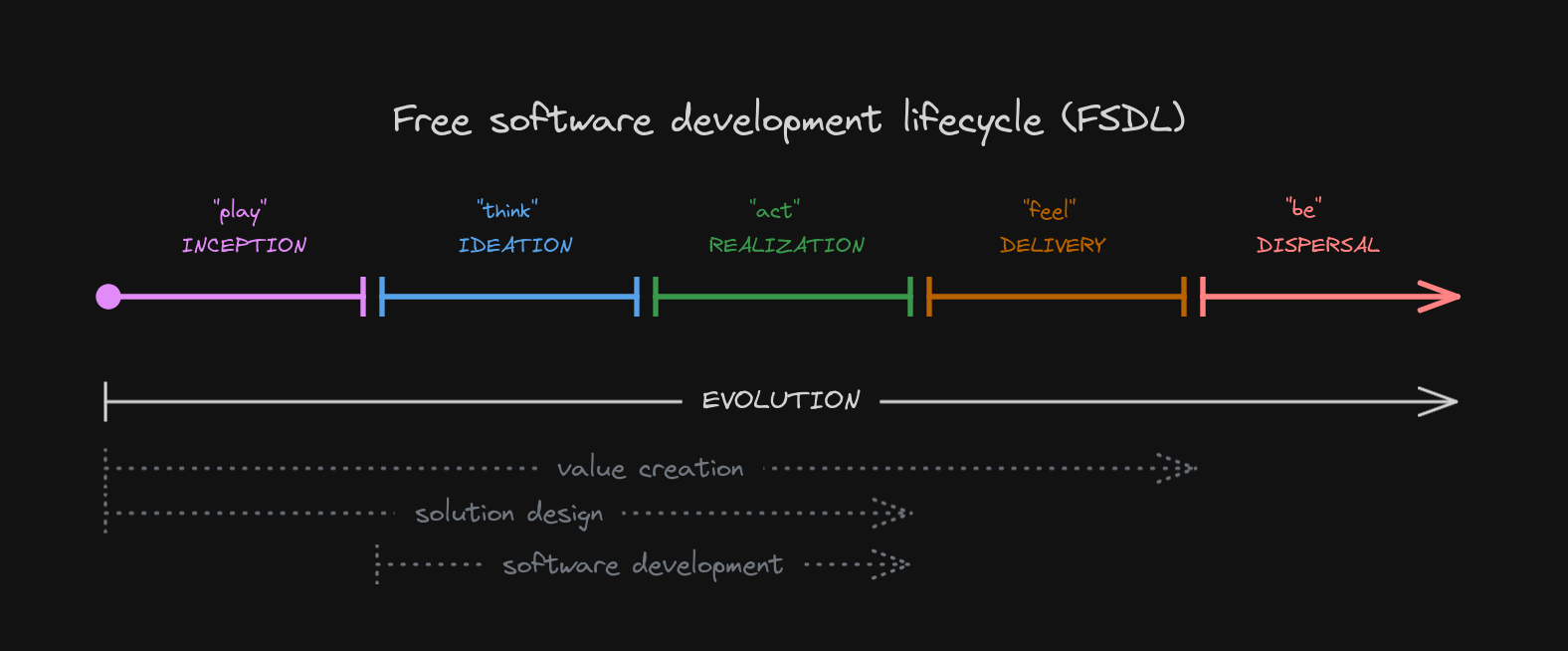Post
In that case an important phase that happens all too often is missing : usurpation by for-profit companies. Once an OS project becomes sufficiently popular, commercial interests hijack the code and/or developers to create an investment-fueled commercial alternative that displaces/stifles the original project.
The Value Creation arrow should extend all of the way to the Dispersal section, as that is where the next iteration begins. 😁
Same for the Solution Design, 😁
Also, good to see that the Software Development is a sub-set of the overall process, as the technical part of the solution is only a step in the process. :D
You should see these stages and the arrows as indicative. This was inspired by RUP, the Rational unified process which had a brief spark of popularity years ago. There you have stages and parallel tracks for various disciplines which all cover the entire lifecycle, but are most prominent only in particular stages. You can see that depicted in the diagram at:
It's an effective practical model, but it lacks the iteration that avoids the Waterfall problems.
SSADM plus Re-Iteration gives better results, and fits better with how the FLOSS developers i have met do things.
(Granted I'm in the UK, so i mostly met-in-person UK developers... ) :D
For #SX I am specifically looking at methodology that is tailored to work against the social dynamics that exist in larger grassroots enviroments, such as a technology ecosystem. Here the FSDL of individual participants deliver services which in turn form the solutions for stated needs.
That's the sort of services created/run by members of @autonomic in the @coopcloud recipe approach. 😁
They will have a lot of practical advice to contribute. :D
That is interesting. SX also has the notion of recipes, and SX Recipes are (or can be) solution artifacts. In informal language 'cook books' is a term in analogies with cooking (of solutions).
Interestingly the Dispersal stage provides a different perspective of what happens with a FOSS project at the end of its lifecycle.
So a project isn't "dead" and work / energy wasted. It's value lives on in the commons, it disperses. In countless ways the value is persistent.
I just made a reference to dispersed value, and it inspired me also to model an important concept for Social experience design #SX and Sustainable open social systems #SOSS as initiatives where #FOSS evolves.
Have you looked at the way that Coop-Cloud do things?
They use a recipe-based approach towards mirroring projects in a practical way:
https://recipes.coopcloud.tech/
Both mirroring and distribution, as well as service support performed on an SME-scale. :D
bonfire.cafe
A space for Bonfire maintainers and contributors to communicate
